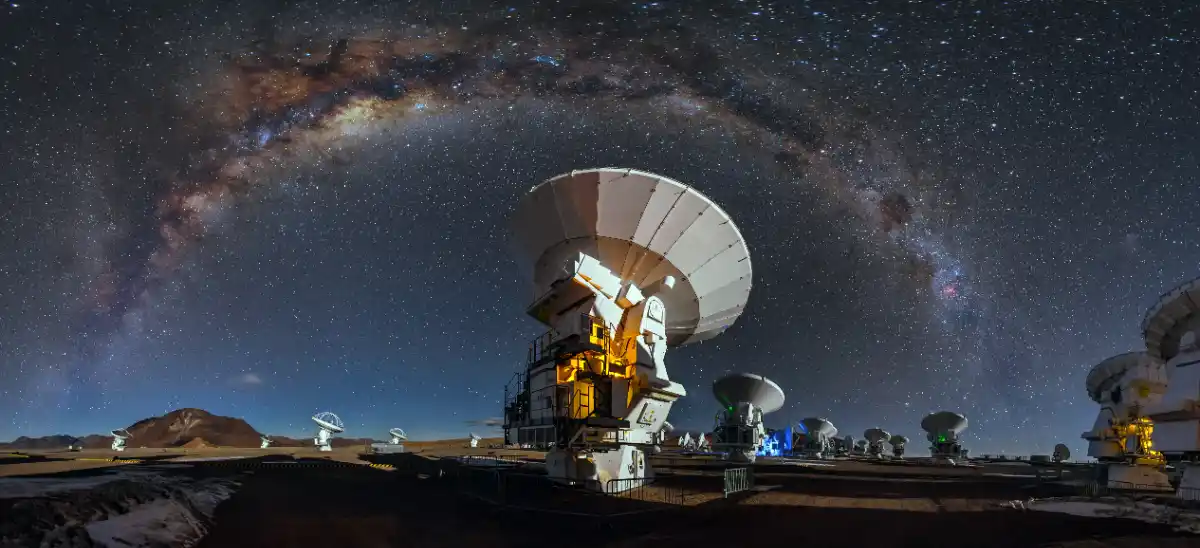| Summary |
|
A team of astronomers led by Martín Sato at the Chalmers University of Technology has used sulfur-based molecules to track violent gas shocks inside three nearby galaxies, uncovering how mergers and black hole activity shape their hidden cores.
Using the Atacama Large Millimeter/submillimeter Array (ALMA), the group detected hydrogen sulfide (H₂S) gas in galaxies NGC 1377, NGC 4418, and NGC 1266, finding signs of powerful outflows that can either fuel or suppress star formation.
The galaxies studied are known as luminous infrared galaxies, or LIRGs. They emit large amounts of infrared light because their cores are packed with dust that hides intense bursts of star formation and feeding black holes. These systems form when galaxies collide, compressing gas clouds and triggering activity that is invisible to regular telescopes.
The researchers turned to hydrogen sulfide as a new tool to study this process. On Earth, H₂S is known for its unpleasant smell, but in space it sticks to dust grains and only becomes detectable when shocks from gas collisions heat and release it. Because of that, H₂S is an excellent marker of energetic and turbulent regions.
Using ALMA’s Band 5 and Band 6 receivers, Sato’s team observed the galaxies at frequencies of 168 and 217 gigahertz, achieving resolutions as fine as 0.2 arcseconds. That level of detail revealed gas motion and structure within just 150 parsecs of each galaxy’s center, a scale small enough to study how material moves near the supermassive black holes and dense star clusters.
The results showed compact H₂S regions overlapping the dusty cores of all three galaxies. In each case, the spectra displayed wide velocity wings, which indicate gas moving at hundreds of kilometers per second. These are signatures of outflow streams of gas pushed out by radiation, stellar winds, or jets from black holes.
In NGC 1377, located about 21 million light-years away, the H₂S signal appeared in a narrow region roughly 150 parsecs across. It stretched east to west, matching the direction of a previously detected molecular jet.
The broad velocity wings suggest this gas is being accelerated, possibly by the same jet that pushes cooler carbon monoxide gas at rates of 8 to 35 solar masses per year. The hydrogen sulfide also traced warmer conditions, between 40 and 200 Kelvin, compared to the colder CO gas nearby.
NGC 4418, about 30 million light-years away, showed an even more complex motion pattern. The H₂S gas in this galaxy appeared to rotate opposite to the stars, likely due to a recent merger that introduced new material. One side of the emission extended into redshifted velocities, hinting at either inflowing gas or a tilted outflow cone. Its dusty core is so dense that it may contain a young, still-forming active nucleus.
In NGC 1266, the hydrogen sulfide behaved differently. Instead of emitting light, it absorbed it, a sign that cooler gas is expanding outward in front of the bright central dust. The blue-shifted absorption and faint red emission together point to a shell of material being driven away from the center, consistent with other observations showing a powerful outflow fueled by either a starburst or a black hole.
To understand the physical conditions inside these regions, the team ran simulations using a program called RADEX. They found that H₂S emission requires gas densities above 10 million molecules per cubic centimeter, ten times higher than estimates based on carbon monoxide in the same areas. This indicates that the sulfur gas traces much denser, more compact zones of shocked material.
The researchers argue that these dense knots form in shock fronts created by fast-moving gas. The shocks compress material without destroying the molecules, a process called C-type shock, where magnetic fields cushion the impact. These conditions resemble those seen in regions of star formation within our own galaxy, such as the Orion Kleinmann-Low nebula, where hydrogen sulfide is also abundant.
The findings are important because LIRGs represent a nearby window into the kinds of galaxy mergers that were common in the early universe.
They help scientists understand how galaxies regulate their growth through feedback, the process where outflows from black holes and stars heat or expel gas, slowing down further star formation. Without these outflows, galaxies could collapse under their own gravity or feed their black holes too rapidly.
Earlier single-dish observations by Sato’s team in 2022 had hinted that hydrogen sulfide emission was connected to the mass of the outflowing gas. The new high-resolution data confirm that connection and show that shocks, not just warm gas, are responsible for producing the H₂S signal.
The team plans to expand this research to a larger sample of galaxies. Future instruments such as the next-generation Very Large Array (ngVLA) will be able to detect even fainter H₂S lines, allowing astronomers to study galaxies farther away and link their observations to the inflows and outflows that the James Webb Space Telescope is finding at high redshift.
Source: High-resolution ALMA observations of H₂S in LIRGs

